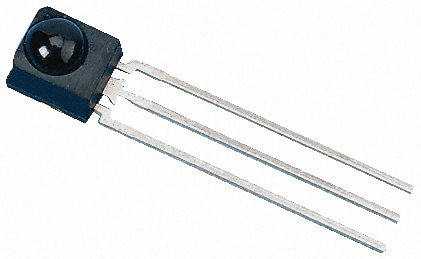On June 5, the Waltonchain team announced that their mid-end IR receiver chip has entered its mass production phase. The chip is created by Waltonchain’s technological backing partner Silitec and is designed to serve the requirements of the up and coming Internet of Things (IoT).
In this article, we’ll take a look at the contributed value of this chip and what its mass production phase means for Waltonchain.
What is a Mid-End IR Receiver Chip?
The demand for chips (integrated circuits) is growing exponentially and is not expected to slow down any time soon, especially with the growth of IoT around the corner. Most existing chips cannot meet the requirements of IoT applications. The ones that do are expensive, among other disadvantages, which poses a big problem for IoT, as each device connected to it (numbering in the billions) will need a specialized chip.
As Waltonchain is specifically targeting the IoT space, it has to deal with incompatible or expensive chips. Waltonchain was created with the vision of establishing a Value Internet of Things, a completely automated value process that will function without human intervention.
This requires millions of RFID tags, which are chips that can track objects through electromagnetic fields. Rather than dealing with this externally, the organization behind Waltonchain decided to integrate the production of the required chips through its technological production partner, Silitec.
The mid-end IR receiver chip (XMS8088) created by Silitec succeeded in tapeout at the first attempt, indicating the value of Waltonchain’s technical partner. Its main selling points are its wide input voltage range, ultra-low power consumption, and that the IR chip is insensitive to ambient light interference and power fluctuations and has high sensitivity and noise tolerance. Also, the chip is highly suitable for blockchain technology applications.

Previously, the IR chip was mainly used in devices using infrared remote control, such as air conditioners, televisions, and most other household and office appliances that are controlled remotely.
These chips will now start to be mass produced, which is great news for Waltonchain. The project can now start distributing the chips to interested parties and add the devices of these companies to its child chains, such as Freyrchain and Fashionchain, thus expanding the network by adding value to it.
Further Chip Development
It is important to note that this IR chip is not the UHF RFID tag chip. The latter chip is the hardware basis for Waltonchain’s vision to integrate blockchain with IoT solutions. There is also a miner core chip underway. Of both chips, engineering examples will come out this year.
There are two other chips in the pipeline that will serve the same cause as the mid-end IR chip, only with different qualities and applicable devices. The first one is the low-end infrared receiver chip. This chip is designed with a high quality/price ratio in mind and consumes 40% less than the mid-end chip and can be used for more simple applications such as toys and simple lights.
The other chip is the high-end anti Wi-Fi interference infrared receiver chip, which is comparable to the mid-end chip. The difference is that it has a strong anti-interference ability and solid prevention of Wi-Fi interference.
Both these chips are in preparation stage of mass production and are expected to go in mass production this year.
One Small Chip, One Giant Leap
The combination of blockchain technology and RFID chips is highly promising, as it will make entire supply chains and production processes fully automated and much more efficient. The mass production phase of the mid-end IR receiver chip is a great step for Waltonchain towards making this combination reality by allowing the project to distribute the required hardware to interested parties.
Additionally, given the ever-rising demand for chips, especially independent RFID chips, the mass production of this mid-end IR chip can be beneficial for the value of Waltonchain on both the software and the hardware side.
Waltonchain is making rapid progression in the production of its hardware. Besides the mid-end IR chip, the two other IR chips are expected to go into their mass production phase this year as well, and the long-awaited RFID chip is on its way. This hardware will greatly assist in increasing the size of Waltonchain’s network and the usage of its envisioned Value Internet of Things.
Related: Match Made in Blockchain: Waltonchain + Request Network (Analytical Speculation)

